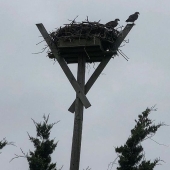
 3
3




 5
5




Thanks, Y'all!
 2
2




 4
4




If there is one thing the Wizard of Oz has taught me, it is not to trust school teachers on bicycles.
 9
9




A build too cool to miss:Mike's GreenhouseA great example:Joseph's Garden
All the soil info you'll ever need:
Redhawk's excellent soil-building series





 6
6




I don't own the plants, they own me.
 2
2




Lorinne Anderson: Specializing in sick, injured, orphaned and problem wildlife for over 20 years.




 3
3




Lorinne Anderson: Specializing in sick, injured, orphaned and problem wildlife for over 20 years.
 2
2








If there is one thing the Wizard of Oz has taught me, it is not to trust school teachers on bicycles.




 2
2




 3
3




Lorinne Anderson: Specializing in sick, injured, orphaned and problem wildlife for over 20 years.
 4
4




 2
2




 3
3








If there is one thing the Wizard of Oz has taught me, it is not to trust school teachers on bicycles.
 2
2




 2
2




 2
2




“In the absence of any other proof, the thumb alone would convince me of God's existence.”
Isaac Newton




"I live on Earth at present, and I don't know what I am.I know that I am not a category.I am not a thing—a noun.I seem to be a verb, an evolutionary process—an integral function of the universe."
Buckminster Fuller

|
I remember because of the snow. Do you remember tiny ad?
Learn Permaculture through a little hard work
https://wheaton-labs.com/bootcamp
|


